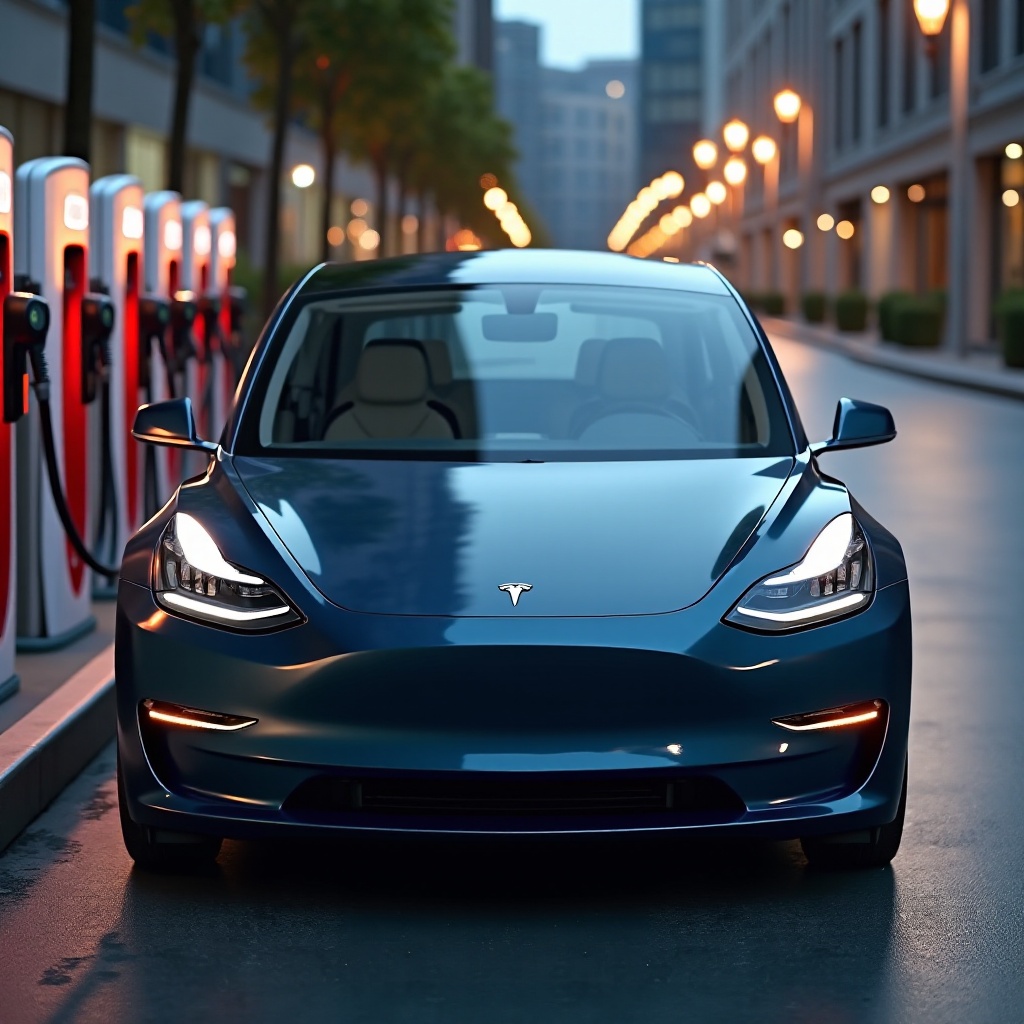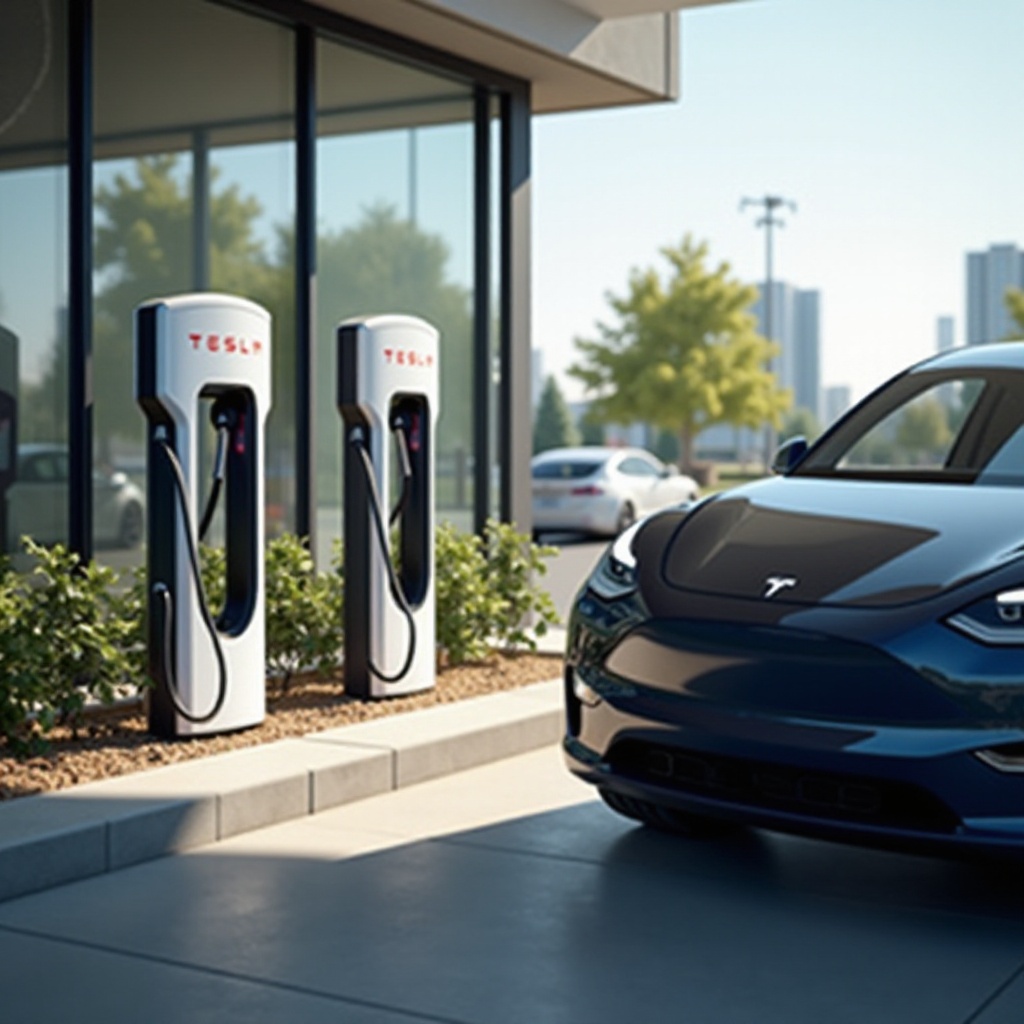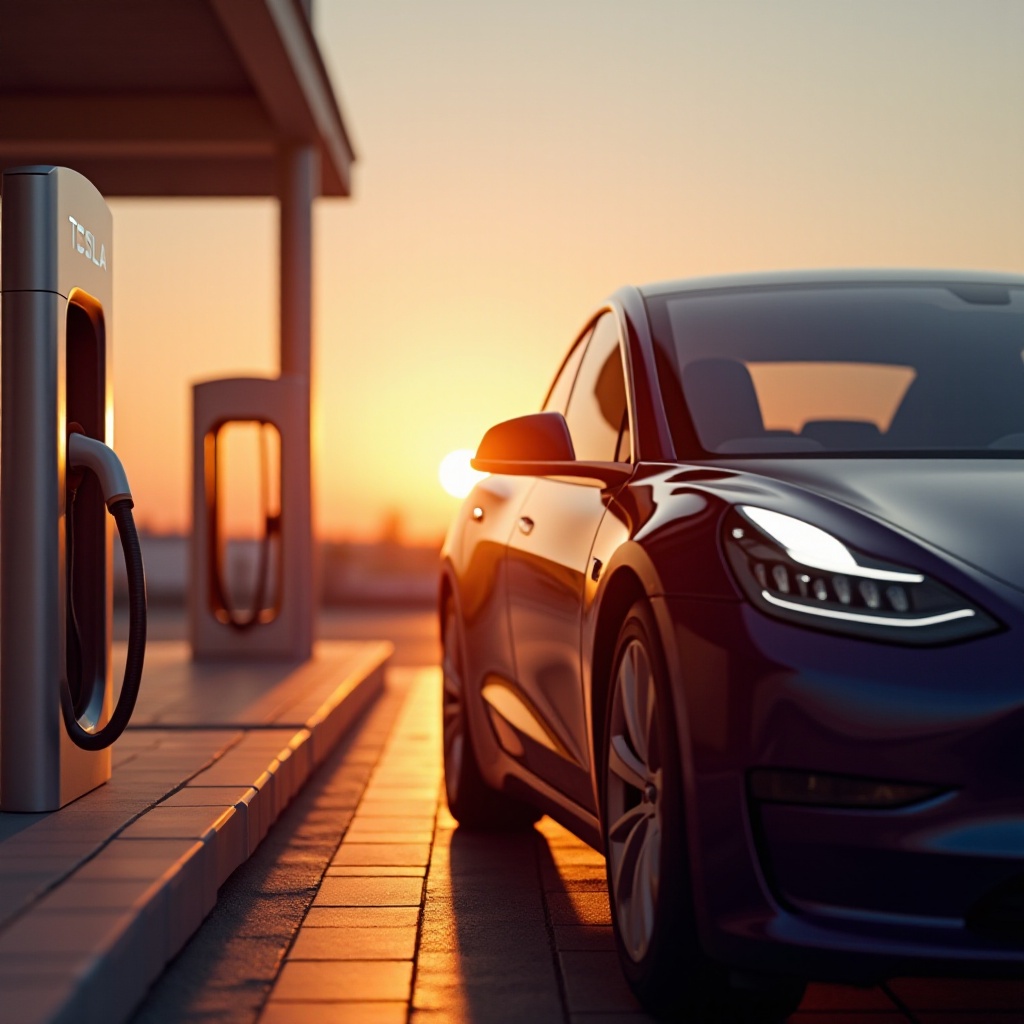Introduction
Electric vehicle (EV) adoption continues to rise, and Tesla remains a front-runner in the market. Owning a Tesla comes with numerous benefits, including access to their extensive charging network. However, many Tesla owners and potential buyers often wonder if they are limited to Tesla’s proprietary Superchargers or can utilize other charging stations. This question is critical for those planning long journeys or residing in areas where Tesla Superchargers might be sparse. In this blog, we aim to answer, ‘Can Tesla charge at any charging station?’ and explore the various aspects surrounding this topic.

Tesla Charging Networks Explained
Tesla has invested heavily in creating a comprehensive and proprietary charging network. The two main types of Tesla charging stations are Destination Chargers and Superchargers. Destination Chargers are typically found at hotels, restaurants, and shopping centers. They provide a convenient way to charge while you go about your day. On the other hand, Superchargers are strategically located along major travel routes for long-distance journeys, offering quick and efficient charging.
Tesla’s Supercharger network is known for its speed and efficiency, capable of charging a vehicle up to 80% in about 30 minutes. This network is exclusively available to Tesla vehicles, making it a significant selling point for potential buyers. However, it’s crucial to know that while Tesla’s network is robust, it is not the only option available for charging your vehicle.
Understanding Different EV Charger Types
Electric vehicles utilize different types of chargers to replenish their batteries, each varying in charging speeds and compatibility. Understanding these types will help you navigate the charging infrastructure more effectively.
AC vs. DC Chargers
AC (Alternating Current) chargers are the most common and are often found in homes and public places. They are slower but sufficient for overnight charging or when parked for extended periods. DC (Direct Current) chargers, like Tesla Superchargers, offer much faster charging speeds and are ideal for quick top-ups on long journeys.
CHAdeMO, CCS, and J1772 Explained
- CHAdeMO: Primarily used by Japanese EV manufacturers like Nissan and Mitsubishi, this standard allows for reasonably fast charging but is not compatible with Tesla without an adapter.
- CCS (Combined Charging System): Common in Europe and North America, CCS combines AC and DC charging capabilities into a single plug. It can be used by Tesla vehicles with the appropriate adapter.
- J1772: This is the standard plug for Level 2 AC charging in North America. Tesla vehicles come with a J1772 adapter, enabling them to charge at any J1772 station.
Understanding these connectors is crucial for utilizing a wider range of charging stations.

Using Non-Tesla Charging Stations
Tesla owners might find themselves needing to use non-Tesla charging stations when Superchargers are unavailable. Fortunately, it’s possible with the right equipment and knowledge.
Compatible Adapters
To charge at non-Tesla stations:
1. CHAdeMO Adapter: This adapter allows you to use CHAdeMO DC fast-charging stations.
2. CCS Adapter: Enables Tesla vehicles to charge at CCS stations, although currently, it’s more common in Europe.
3. J1772 Adapter: This standard adapter, included with Tesla vehicles, lets you charge at any J1772 Level 2 AC station.
Steps to Charge at Non-Tesla Charging Stations
- Locate a compatible charging station using apps or map services.
- Connect the appropriate adapter to your Tesla.
- Follow the station-specific instructions, which usually involve using an app or a payment method to initiate the charging process.
- Monitor your charging session through your Tesla app to ensure everything proceeds smoothly.
Using these steps, you can extend the range of your Tesla by tapping into a broader network of charging stations.
Cost and Efficiency Considerations
Charging costs and time efficiency are crucial factors when considering non-Tesla charging options.
Comparing Charging Costs
Charging costs vary significantly between Tesla Superchargers and third-party stations. Tesla’s network often charges per kilowatt-hour (kWh) or per minute, depending on the location. Third-party stations might have different pricing models – some charge a flat fee, while others charge by kWh or by the hour.
- Tesla Superchargers: Generally offer transparent and competitive pricing, especially for long-distance travel.
- Third-party stations: Prices can range widely. Some are more expensive, especially DC fast chargers, while others, like J1772 stations, might be cheaper or even free in certain areas.
Time Efficiency Analysis
When it comes to charging time, Tesla Superchargers outshine many third-party options due to their high power output. DC fast chargers from third-party providers can also deliver speedy charges, but not all are equal. J1772 Level 2 chargers are the slowest, suitable for overnight charging.
In summary, while non-Tesla stations can be more costly and less efficient, they provide essential flexibility, especially in areas with few Superchargers.
Real-World Tips for Tesla Owners
To make the most out of your Tesla, it’s essential to plan and adapt to charging infrastructure.
Planning Long-Distance Trips
- Use Tesla’s built-in trip planner to locate Superchargers along your route.
- Consider third-party apps like PlugShare or ChargePoint for non-Tesla stations near your path.
- Ensure you have the necessary adapters for potential non-Tesla chargers you might encounter.
Charging in Urban Areas vs. Highways
- Urban Areas: Utilize Destination Chargers or J1772 stations for convenience while you shop or dine.
- Highways: Rely on Superchargers for efficient, quick top-ups during long drives to minimize travel time.
Future Prospects for EV Charging
The future of EV charging looks promising with increasing interoperability between different charging networks. Tesla has expressed interest in opening up its Supercharger network to non-Tesla EVs, which could revolutionize the market. Technological advancements, such as faster charging rates and more widespread deployment of DC fast chargers, will make electric vehicle ownership more convenient and accessible.
As the EV market expands, more collaborative efforts among manufacturers and charging networks will likely emerge, further easing the adoption of electric vehicles.

Conclusion
Charging a Tesla at non-Tesla stations is feasible with the right adapters and knowledge. While Tesla’s Supercharger network offers unmatched convenience and speed, supplementary charging options expand your horizons. Understanding the different charger types, costs, and planning your routes can ensure a stress-free and efficient EV experience.
Frequently Asked Questions
Can I charge my Tesla at any charging station with an adapter?
Yes, with the appropriate adapter, you can use CHAdeMO, CCS, and J1772 charging stations.
What is the difference between Tesla Supercharger and a third-party charging station?
Tesla Superchargers offer faster charging times and are exclusive to Tesla vehicles, while third-party stations require adapters and vary in speed and cost.
How much does it cost to charge Tesla at a non-Tesla charging station?
Costs vary widely; non-Tesla stations can be more expensive or cheaper than Superchargers, depending on the provider and location.

